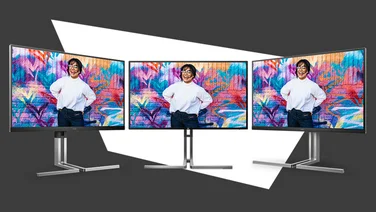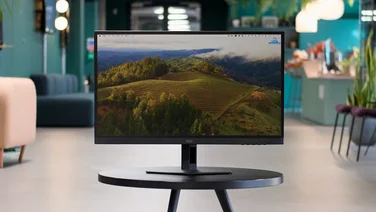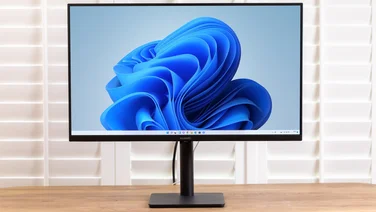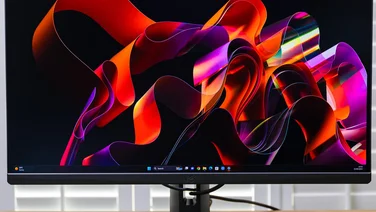To help us provide you with free impartial advice, we may earn a commission if you buy through links on our site. Learn more




We don’t normally review monitors that cost over £500, but Samsung’s S27A850D is no ordinary monitor; as well as an impressive features list – a 2,560×1,440 resolution, fully-adjustable stand and three-way USB3 hub – it’s the first monitor we’ve seen using Samsung’s new Plane-to-Line Switching (PLS) technology, which is meant to produce deeper colours, better viewing angles and stronger contrast.

It’s the same screen technology that’s used in Samsung’s Galaxy Tab 10.1 tablet, and in our review we remarked that the tablet’s screen was incredibly bright and sharp, with excellent viewing angles. The same applies to the S27A850D, but on a screen almost four times as large. Our current Ultimate award-winner, the Hazro HZ27WC, suffers in comparison, with the Hazro screen’s colours looking washed out.
Colours are almost too deep and vibrant. Reds in particular can take on an almost radioactive glow if the source image is already over-exposed: in some of our test shots of fruit, the strawberries looked fit to explode. In our more restrained test shots, the increased depth of colour meant that finer gradients of contrast were possible, giving objects more shape and depth. Our only complaint was with black-and-white shots, where Hazro’s monitor still had an edge, producing better highlights and reflections.
The menu controls are clearly labelled and sit just under the screen, and the menu itself is clear and easy to follow. Unlike Hazro’s stripped-down HZ27WC, the S27A850D has a full suite of image quality controls, including Samsung’s Magic settings, which we don’t get on with. Magic Color blows colours out of proportion, even on the lowest (Intelligent) setting. On Full settings, normal colours become almost fluorescent, so we left it turned off entirely.

Magic Brightness works better, and merely acts as a repository for preset modes, such as Standard (which puts Brightness down to 35%), Game, Cinema and Dynamic Contrast. We had the most luck with Game mode, which brightened the image without making colours oversaturated, while Dynamic Contrast produced distracting changes in brightness. Choosing a preset disables the normal Brightness, Contrast and Sharpness controls, too, so we kept it at Custom and set brightness as required by our viewing material.
Really, you want to keep the image as free of processing as possible to show off the PLS panel. In our film tests, watching Casino Royale, Bond never looked so red-blooded – again, maybe a bit too much red – while we could still see the buttons on Le Chiffre’s black velvet dinner jacket in the dark casino scenes. Gaming tests were impressive too, with the larger colour palette adding more depth and realism to Call of Duty 4’s multiplayer maps.
All the ports face sideways, and with a VESA mount the S27A850D is ideal for wall-mounting or for use in multi-monitor setups. One side has the connection for the USB hub, which goes to your PC, and three USB3 ports, as well as two 3.5mm audio sockets; the other side houses two DVI ports and a DisplayPort input. The power supply clips onto the back of the monitor, rather than dangling messily on your desk or beneath it.

There’s another clever feature: you can plug in two computers and view their desktops side-by-side on the display. This Picture By Picture function even has its own button underneath the screen, making it easier to set up, but the first time you do it you’ll have to make the S27A850D your primary display for both computers, and change the resolution on each to 1,280×1,440. This goes to show how much screen space you have with the 2,560×1,440 resolution – it’s enough to comfortably show two desktops side by side.

There are also plenty of Eco options – including a graphic that tells you how many trees you’ve saved. The more practical options are the movement sensors that can turn the monitor off when you leave your seat, and another light sensor that adjusts the brightness based on ambient lighting. With its LED backlight, the S27A850D only draws 53W anyway.
Then there’s the cost. You can get many less expensive monitors that have adjustable stands, USB hubs and large resolutions, but few that have all three and USB3. However, none of them will have the S27A850D’s amazing PLS panel, and it really is a cut above the rest. Hopefully, we’ll see it on less expensive panels in the future, but until then we think it’s the best monitor you can buy, so it wins our Ultimate award.






